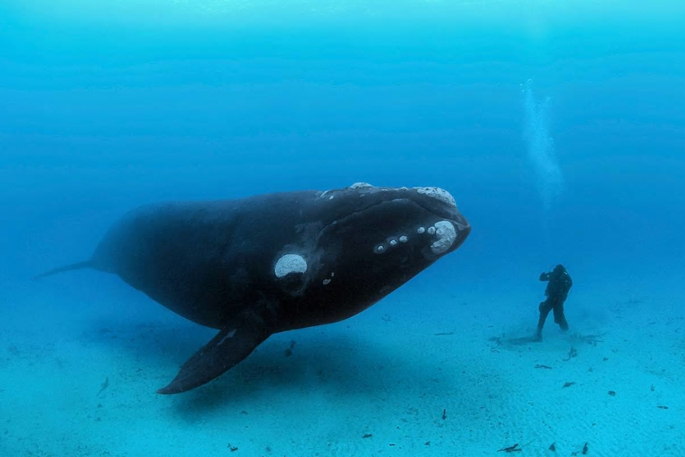About 30 per cent of Earth's oceans need to be protected from the impact of humans by 2030, scientists say.
The high seas are kilometres from our shores, but New Zealand's fisheries, climate and marine life would all benefit from a global network of marine sanctuaries.
"These negotiations are the result of decades of work and decades of calling for more protections," Greenpeace Oceans campaigner Jess Desmond says.
"This has prompted the UN to say: 'We really need to do something about this right now'."
The report from the University of Oxford, University of York and Greenpeace released on Thursday sets out the blueprint for how ocean sanctuaries or marine protected areas (MPA) could be managed, and says all it needs is political backing.
Governments are already negotiating towards a Global Ocean Treaty and are in the midst of a second meeting, with the fourth and final meeting in April next year.
The treaty would include a global body to implement marine sanctuaries internationally, but to date New Zealand had not supported it, Jess says.
"If we leave it up to regional bodies to do this we will get the haphazard 'status-quo' of oceans protection, which has failed so far."
Locally, the New Zealand Government has told the UN that 30 per cent of our waters are in reserves.
This week, environmentalists won a battle to say that's not true - only about 0.5 per cent of New Zealand's waters are in "no take" reserves.
Conservation Minister Eugenie Sage announced that the Government would now be more transparent.
A report from the minister says more than 4000 of native plant and wildlife species are threatened or at risk of extinction and more needs to be done.
Two years ago it was found 90 per cent of seabirds are at risk of extinction due to "serious pressures" in the oceans around New Zealand.
Jess says the long-term health of the ocean would benefit every country.
Whales, turtles, birds and entire eco-systems would benefit, if countries acted with urgency, she says.
"We've only got 10-11 years to make massive progress and so this is crucial that we do this now."
The status quo would be absolutely devastating to ocean health, she says.
"We've seen steep declines in marine life around the world, that will continue."
The report says the high seas, those oceans outside of any country's jurisdiction, face growing exploitation from a handful of rich nations.
Fishing, deep seabed mining, climate change, acidification, plastic and other marine pollution are all part of the picture.
"By initiating an international legally binding instrument to enable the protection of marine life and habitats outside national jurisdiction, the United Nations has an opportunity to put in place robust structures to create and govern ocean sanctuaries on the high seas," the report says.
"Scientists are calling for at least 30 per cent of the world's oceans to be protected as ocean sanctuaries, and this study charts how that could be achieved."
The potential protected areas are based on data, including the distributions of sharks, whales, trenches, hydrothermal vents and commercial fishing pressure.
Key findings:
Scientists want 30 per cent of oceans to be protected as sanctuaries.
The protected area design is not set in stone.
The areas would be managed by a new global framework.
The report claims the plan is feasible to design a planet-wide network of high seas protected areas.
High seas marine life drives the oceans "biological pump" - without it, the atmosphere would contain 50 per cent more carbon dioxide and earth would be uninhabitable.
As well as conservation, marine reserves and sanctuaries could benefit fisheries.
-Stuff.co.nz/Amber-Leigh Woolf.



0 comments
Leave a Comment
You must be logged in to make a comment.